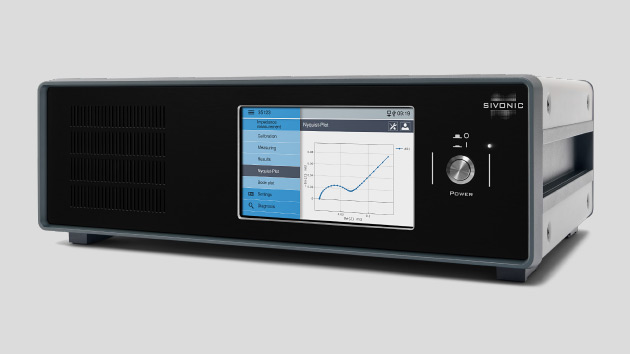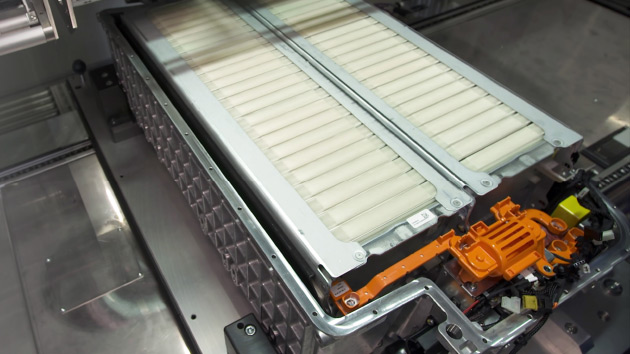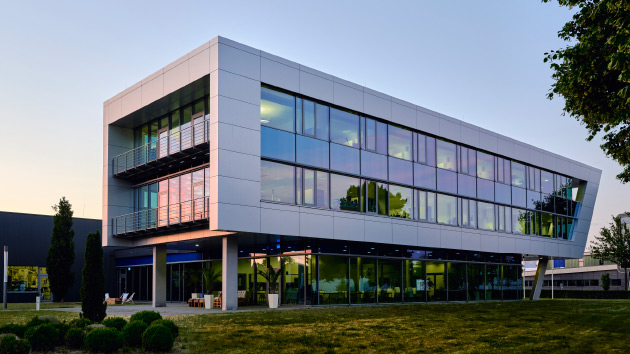The development of electrolyzers for green hydrogen production has made enormous progress in recent years. Engineers and researchers are continuously working to improve efficiency to ensure the effective use of renewable energies. A central component of these systems is the electrolyzer stack, whose efficiency largely determines the overall success of hydrogen production.
The overall efficiency of an electrolyzer is the product of the efficiencies of the electrolyzer stack, the power supply, and the additional components (Balance of Plant, BOP). While the power supply impresses with modern inverters achieving efficiencies of around 97% and the BOP reaches efficiency values between 90–95% through optimized cooling and management systems, the greatest potential for optimization lies within the electrolyzer stack itself.
Trends in Material and Catalyst Research
In the field of PEM (Proton Exchange Membrane) electrolysis, the focus is strongly on advancing polymer membranes. The new materials are designed not only to be more stable and durable but also to exhibit lower degradation rates. At the same time, there is intensive work to reduce the use of rare metals. Innovative catalysts based on alternative materials make it possible to enhance the electrode reactions more efficiently—directly contributing to an increase in the stack efficiency.
Research on alkaline electrolysis also focuses on optimizing electrode architectures and electrolyte compositions. Here, adjustments to the liquid electrolyte are emphasized to reduce kinetic hindrances and improve reaction rates. These measures can further increase the efficiency of the electrolysis process while keeping material costs under control.
High Temperatures as an Opportunity: Solid-Oxide Technology
Solid-Oxide Electrolysis (SOEC) leverages the advantage of high-temperature operation (700–900 °C) to make the electrolysis process thermodynamically more favorable. Ceramic materials that can withstand these temperatures are key. Thermal integration—i.e., the reuse of waste heat—enables a reduction in the system's energy demand and further increases the electrical efficiency. Current research approaches focus on improving the stability of ceramic electrolytes and electrodes, as well as optimizing heat recovery.
Diagnosis as the Key to Optimization
A crucial aspect for further optimization of electrolyzer stacks is detailed diagnostics. Here, SIVONIC makes an important contribution. The company offers a state-of-the-art impedance spectrometer with which the effects and processes influencing the efficiency of the electrolyzer stack can be precisely examined both in the laboratory, on test benches, and in operating electrolyzer systems. By analyzing the impedance, material degradation, electrode processes, and other dynamic effects can be identified and specifically optimized.
SIVONIC is a partner in the EU project DELYCIOUS – Diagnostic Tools for Electrolyzers. This project aims to revolutionize green hydrogen production by improving the diagnosis of electrolyzers. The collaboration within DELYCIOUS fosters the exchange of insights between research and industry and supports the implementation of standardized diagnostic procedures, which will contribute to a significant long-term increase in the efficiency of the systems.
System Integration, Diagnostics, and Dynamic Operation
Beyond material optimization alone, system integration plays an essential role. Modern control techniques enable electrolyzers to be flexibly adapted to fluctuating renewable energy sources. By intelligently combining power and heat utilization, the overall efficiency of the system is significantly enhanced. Insights from dynamic operation and cross-system integration into industrial processes contribute substantially to further increasing system performance.
Optimistic Perspectives for the Future
Recent scientific publications underscore that targeted material research, innovative operational strategies, and advanced diagnostic procedures can achieve significant efficiency gains in the electrolyzer stack. Engineers can decisively improve efficiency through the use of modern catalysts, more stable membranes, optimized ceramic materials, and precise diagnostic instruments like the SIVONIC impedance spectrometer. At the same time, improved integration of heat recovery systems ensures that future electrolyzers will not only be more powerful but also more economical.
With a clear focus on optimizing the electrolyzer stack—supported by innovative diagnostic and monitoring technologies as well as holistic system integration—the future of electrolyzers is marked by innovation and energy efficiency. This represents a crucial step towards a sustainable hydrogen economy.



![[Translate to Englisch:] [Translate to Englisch:] SIVONIC Electrolyzer Efficiency](/fileadmin/_processed_/8/0/csm_SIVONIC_Electrolyzer_Efficiency_3520e3742a.png)